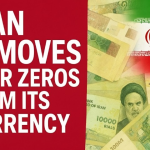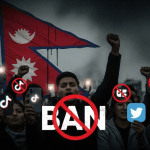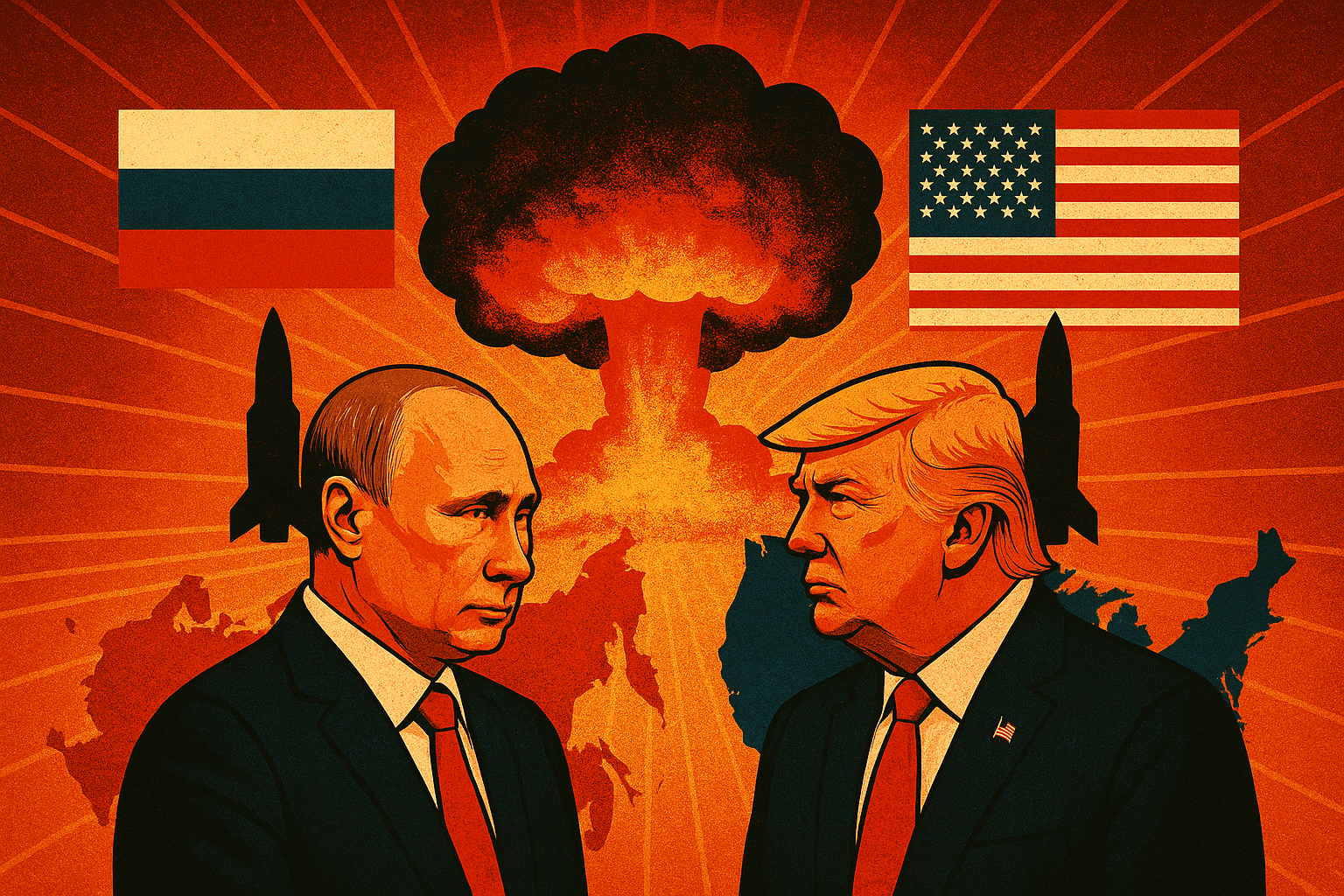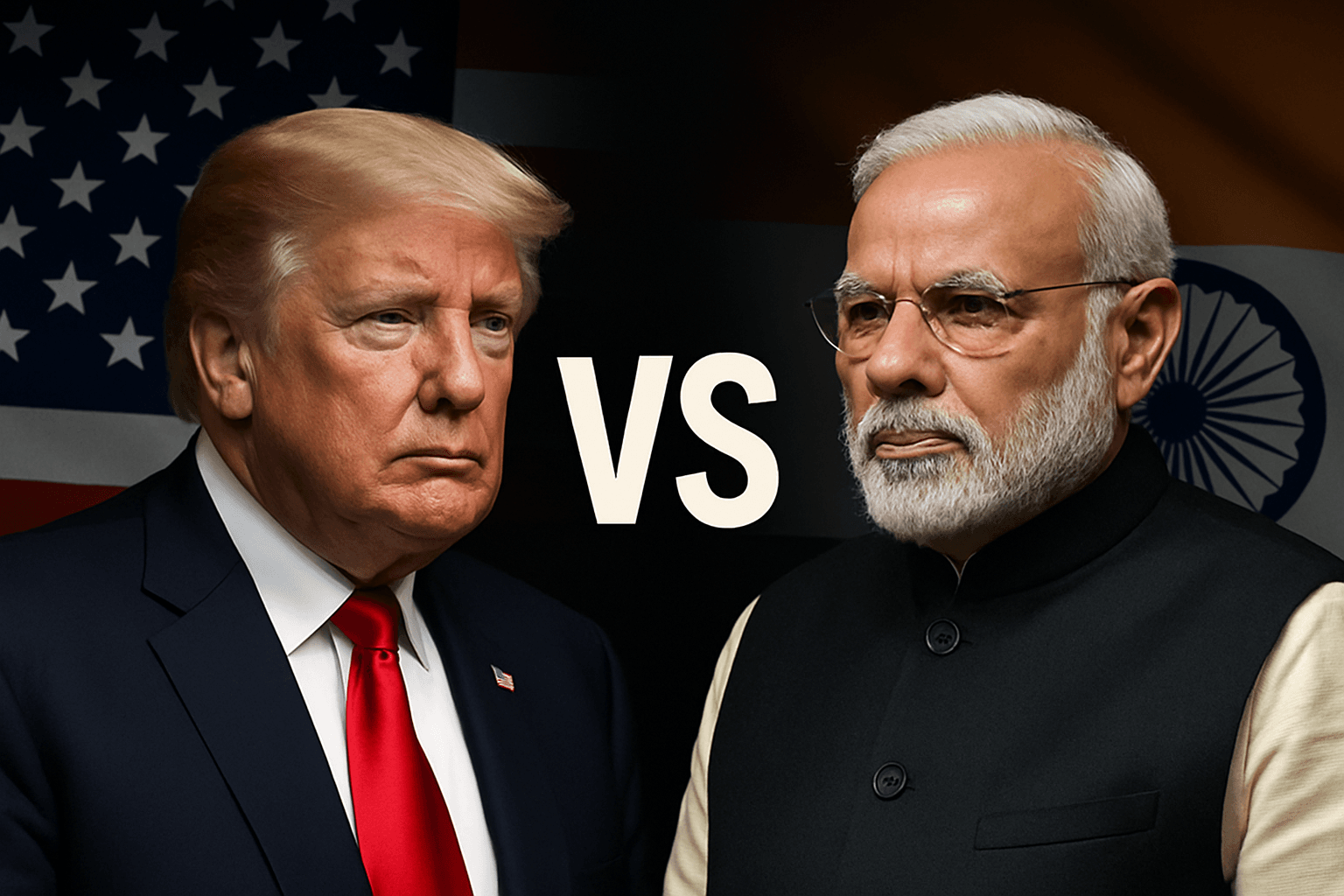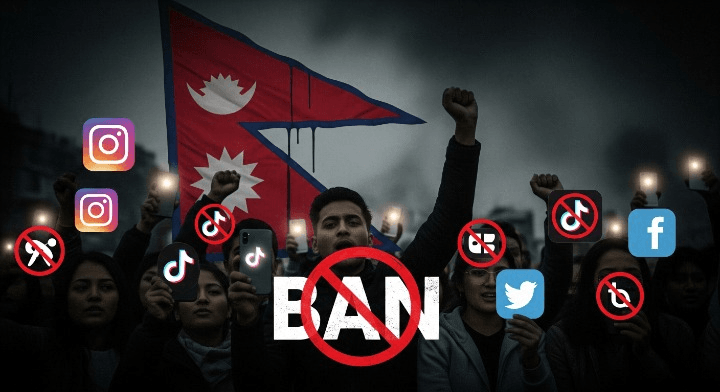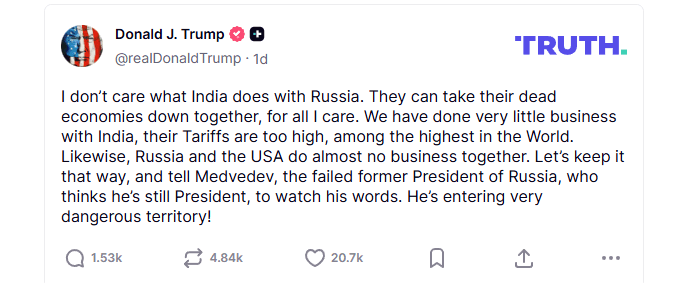
On July 31, 2025, former U.S. President Donald Trump, via his Truth Social platform, announced a 25 % tariff on Indian imports effective August 1, accompanied by an unspecified “penalty” for India’s trade in Russian oil and defense equipment. He wrote:
“I don’t care what India does with Russia. They can take their dead economies down together, for all I care…”
He also added that the U.S. has done “very little business with India,” accusing India of having among the world’s highest tariffs and “strenuous and obnoxious non‑monetary Trade Barriers”
Why “Dead Economy”? Trump’s Logic—or Lack Thereof
Trump seemingly labelled both India and Russia “dead economies” as a rhetorical jab over India’s continued ties with Moscow, particularly in oil and arms procurement. He portrayed India as economically stagnant despite trade targets and suggested India’s high protective tariffs left little room for U.S. exports
India’s Economic Reality
Contrary to Trump’s characterization:
India is the 4th largest economy globally.
According to IMF, India is the fastest-growing major economy, with a projected growth rate of around 6.4 %.
Bilateral trade reached over $129 billion in 2024, making the U.S. India’s largest trading partner.
Exports span pharmaceuticals, apparel, gems, electronics, and iPhones assembled in India—with smartphones and drugs notably exempt from the new tariffs—for now.
Domestic Reactions: From Goyal to Rahul Gandhi
Commerce Minister Piyush Goyal responded firmly: India has “taken note” of the U.S. action and is studying its implications, while affirming commitment to a fair, balanced trade agreement and pledging to protect national interests.
Former Congress leader Rahul Gandhi controversially endorsed Trump’s “dead economy” remark, saying:
“He is right… everybody knows this except the prime minister and the finance minister… I am glad that President Trump has stated a fact.”
This statement — whether sarcastic or sincere — drew criticism across the political spectrum for echoing Trump’s rhetoric.
The broader opposition called the tariff move a diplomatic failure, blamed PM Modi’s government for silence, and demanded a parliamentary debate — warning growth could lose up to 40 basis points.
Trade Tensions & Strategic Shifts
Talks expected to continue: Trump indicated negotiations are ongoing: “We’re talking to India now — we’ll see what happens… You’ll know by end of this week”.
India had been working toward a trade framework targeting $500 billion bilateral trade by 2030, but Trump’s unilateral action complicates progress.
Analysts warn India’s exporters—especially jewelry, textiles, and MSMEs—face risk from orders being paused or canceled, and the rupee has weakened while equities dipped following the announcement
Global & Diplomatic Fallout
Russia’s Dmitry Medvedev responded mockingly, referencing “Dead Hand”—a Cold War-era nuclear doctrine—and warned Trump about underestimating those he calls “dead”.
International opinion viewed the U.S. move as increasingly transactional: Trump pursued simultaneous trade deals with Pakistan, Japan, South Korea, which fueled Indian dissatisfaction as strategic ties with the U.S. shifted .
What Lies Ahead?
Impact forecast: An Axis Bank estimate suggested the new tariff would cost India around $10 billion in annual export revenues. Economists cautioned it may dampen investor and consumer sentiment, though India’s growth edge remains intact.
Indian strategy: The government appears focused on defensive economic diplomacy, accelerating MSME support, exploring alternative markets, and protecting vital sectors like dairy and foodgrain, which remain red lines in negotiations.
Possible opening: If India shows willingness to address U.S. concerns—lower tariffs, diversify energy sources, reduce trade friction—a trade deal window by October remains possible, though New Delhi is wary of rushing into an unequal agreement.
Conclusion: A Clash of Narratives
Trump’s explosive narrative—branding India “a dead economy”—flies in the face of objective economic data. As the 25 % reciprocal tariff and unspecified Russia‐penalty take hold on August 1, trade negotiations hang in the balance. India’s leadership, opposition, and global observers now must grapple with a head‑on confrontation of economic narratives, national pride, and realpolitik.
Will diplomacy tame this tariff storm, or will bilateral relations be fundamentally reshaped? Only time—and returns on negotiation—will tell.
